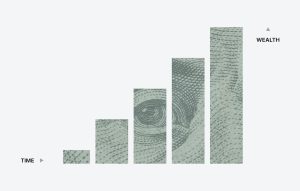The foreign exchange market, or forex, has become the most liquid and largest financial market globally. It is where currencies are traded for profit or hedging purposes, with an estimated daily trading volume of over $5 trillion. Forex trading can be profitable if you know what you are doing, and one of the strategies traders use to generate income is through swap trading. Swap trading is a way of profiting from the difference in the interest rates between two currencies. In this article, we will explain what forex pairs pay a positive swap.
Firstly, what is a swap?
A swap is a financial instrument that allows traders to exchange cash flows between two parties based on an agreed-upon notional amount. In the forex market, a swap refers to the interest rate differential between two currencies. It is the cost or revenue associated with holding a position overnight. Swaps can be positive or negative, depending on the interest rate differential between the two currencies.
For example, suppose you are long on the AUD/USD pair, meaning you have bought Australian dollars and sold US dollars. If the interest rate in Australia is higher than in the US, you will receive a positive swap as compensation for holding the position overnight. Conversely, if the interest rate in Australia is lower than in the US, you will pay a negative swap.
What forex pairs pay a positive swap?
Forex pairs that pay a positive swap are those with a significant interest rate differential. Typically, the currency with the higher interest rate will have a positive swap, while the currency with the lower interest rate will have a negative swap. Here are some examples of forex pairs that pay a positive swap:
AUD/JPY
The AUD/JPY pair is one of the most popular pairs for carry trading, a strategy that involves borrowing in a low-yielding currency and investing in a high-yielding currency. The Reserve Bank of Australia (RBA) has an interest rate of 0.1%, while the Bank of Japan (BoJ) has a negative interest rate of -0.1%. Therefore, holding a long position in the AUD/JPY pair would generate a positive swap.
NZD/JPY
The NZD/JPY pair is another popular pair for carry trading. The Reserve Bank of New Zealand (RBNZ) has an interest rate of 0.25%, while the Bank of Japan (BoJ) has a negative interest rate of -0.1%. Therefore, holding a long position in the NZD/JPY pair would generate a positive swap.
AUD/USD
The AUD/USD pair is also a popular pair for carry trading. The Reserve Bank of Australia (RBA) has an interest rate of 0.1%, while the Federal Reserve (Fed) has an interest rate of 0.25%. Therefore, holding a long position in the AUD/USD pair would generate a positive swap.
USD/ZAR
The USD/ZAR pair is popular for its high-interest rate differential. The South African Reserve Bank (SARB) has an interest rate of 3.5%, while the Federal Reserve (Fed) has an interest rate of 0.25%. Therefore, holding a long position in the USD/ZAR pair would generate a positive swap.
USD/BRL
The USD/BRL pair is another popular pair for its high-interest rate differential. The Brazilian Central Bank (BCB) has an interest rate of 2%, while the Federal Reserve (Fed) has an interest rate of 0.25%. Therefore, holding a long position in the USD/BRL pair would generate a positive swap.
Conclusion
In conclusion, forex pairs that pay a positive swap are those with a significant interest rate differential. Traders can profit from these swaps by holding a long position in the higher-yielding currency and a short position in the lower-yielding currency. However, it is essential to note that swap rates can change, and traders must keep an eye on any changes in interest rates that may affect their positions. It is also important to note that forex trading involves risks, and traders must understand the risks involved and manage them effectively to avoid losses.





